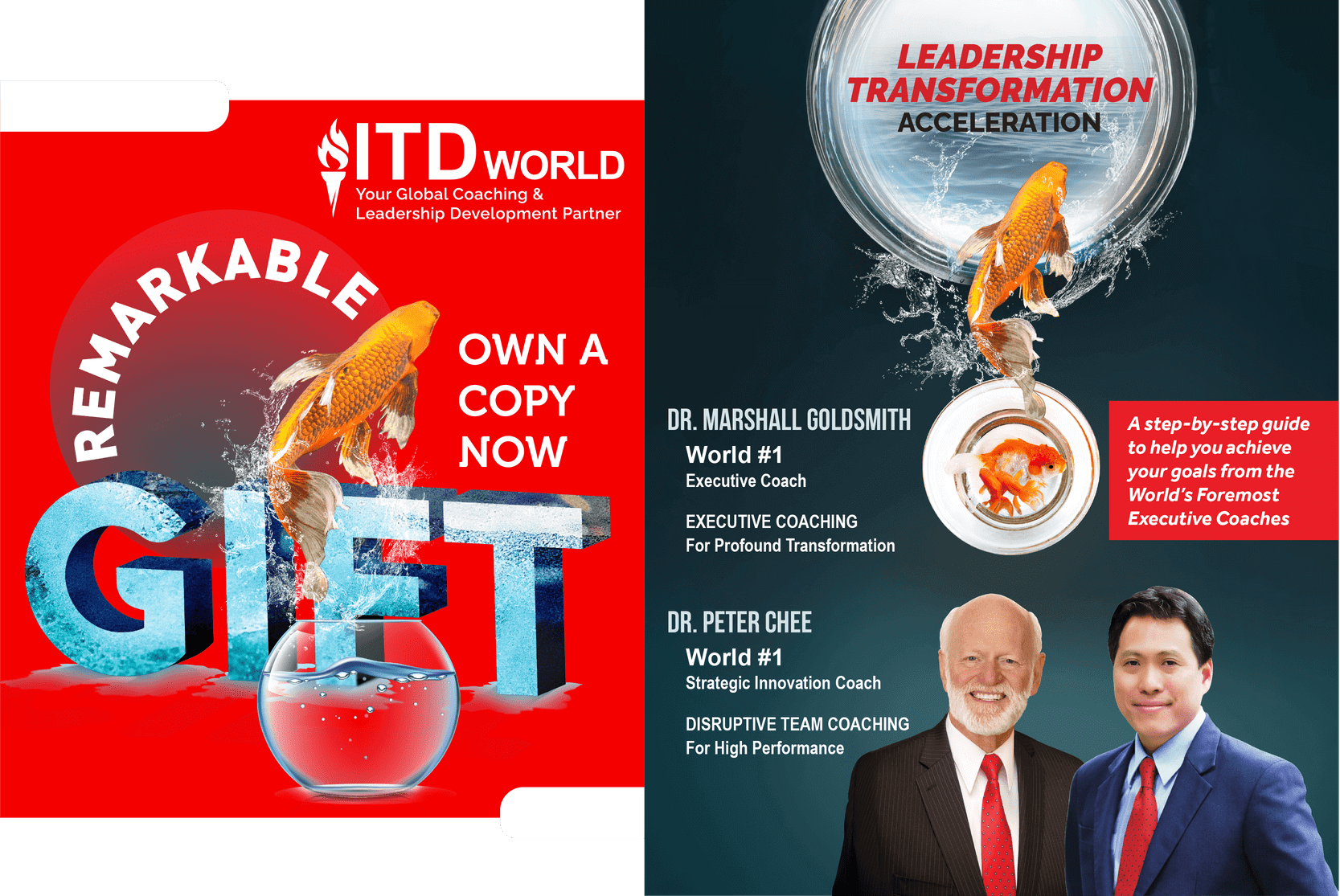Leadership is an art, a science, and a skill that transcends industries and professions. Whether you’re a business executive, a community leader, or simply looking to enhance your ability to inspire and guide others, mastering the art of leadership is a journey worth embarking on.
(by Jonathan M. Pham)
What is Leadership?
Leadership is influence, nothing more, nothing less. John C. Maxwell
Leadership is a multifaceted concept that lies at the heart of human interaction and progress. It encompasses a broad spectrum of abilities, qualities, and actions, all geared towards one fundamental objective: influencing and motivating people in a positive way.
At its core, leadership revolves around inspiring, guiding, and engaging individuals and teams to unite their efforts, working collaboratively toward a shared goal or vision. While this definition provides a basic framework, the essence of leadership is far more intricate, evolving, and profound.
Great leaders stand out not merely for their titles or positions – but for their remarkable ability to navigate the complex terrain of human relationships, emotions, and aspirations. They possess a unique blend of qualities and competencies that set them apart in any setting, be it in the corporate boardroom, the political arena, or within local communities.

Leadership vs Management – The Differences
The concepts of leadership and management are often used interchangeably, but they do not share the same meaning. The former involves the exhibition of characteristics that go beyond the latter – one of which is the ability to inspire those who follow you.
Another difference is that leaders emphasize innovation above all else. While a manager typically seeks to inspire their team to achieve common objectives while still following the organization’s rules, a leader may be more concerned with greater goals – even if it means a complete restructuring of the company. When an employee comes up with a bold new idea about how to solve a problem, a talented leader will encourage them to experiment with that approach.
Middle managers are more likely to stick to existing structures. They have little freedom to “break” the rules and pursue greater goals. On the other hand, leaders often operate quite independently – which allows them to better tolerate volatility, as long as they believe that the ultimate benefits are worth the price.
That said, a leader’s desire for innovation may sometimes result in unintended consequences. A chaotic and high-pressure work environment will lead to a variety of interpersonal problems. When such issues arise, managers are likely to try to find a quick solution. Meanwhile, leaders may sometimes be singularly focused on achieving lofty goals – to the point of forsaking interpersonal issues and employee wellbeing.
| Feature | Leadership | Management |
| Focus |
|
|
| Goals |
|
|
| Risk Tolerance | High | Low |
Example of Leadership
Jack Welch held the position of chief executive officer (CEO) of General Electric Co. from 1981 to 2001. He played a key role in the organization’s 600 acquisitions in emerging markets, helping increase GE’s market value from $12 billion to $505 billion at the time of his retirement. Realizing the inevitability and continuity of change, Welch asserted that all employees at GE needed to embrace change. As such, to continue the company’s operations and produce greater output, managers and employees were expected to continually innovate themselves and their work.
Welch hired managers who shared his vision for GE, had boundless energy, and knew how to motivate employees. The managers under him were responsible for developing ideas for the future and finding ways to turn them into reality. He also emphasized that management needed to work closely with employees – to truly understand what they were doing and the reasons behind it.
Owing to Welch’s leadership style, managers and employees became more empowered – which later resulted in higher quality products, better customer satisfaction, and significant profit increases.
Why is Leadership Important?
In the dynamic and ever-evolving landscape of today’s business world, effective leadership serves as the cornerstone upon which the success and vitality of organizations, teams, and societies are built. Leadership is not a mere luxury; it is an absolute necessity due to its role in:
-
Guiding organizations to their goals
Organizations, whether large corporations or small nonprofits, operate within a complex and competitive environment. They set ambitious goals and face numerous challenges along the way. Effective leadership serves as the guiding force that steers them toward their objectives.
Leaders’ role is to provide direction, align resources, and ensure that everyone is working cohesively toward a common vision. They act as the lodestar, keeping the team on course despite the ever-changing winds of the business landscape.
-
Motivating teams to achieve excellence
Within organizations, teams are the engines of productivity and innovation. However, the mere presence of a team does not guarantee success. It takes effective leadership to motivate and empower all members to reach their full potential.
Leaders inspire fellows to push their boundaries, set and exceed their own expectations, and consistently deliver outstanding results. They create an environment where people feel motivated to bring their best to the table, fostering a culture of excellence.
-
Empowering people to make a difference
Leadership extends beyond the confines of organizational hierarchies. It transcends borders and permeates communities, societies, and the world at large. Great leaders possess the ability to inspire people to make a meaningful difference in their lives and those of others. They instill a sense of purpose and collective responsibility.
Whether it’s advocating for social justice, championing environmental sustainability, or leading humanitarian efforts, these exceptional individuals mobilize people to act in pursuit of a greater good.
-
Navigating complexities
The contemporary world is characterized by rapid change and uncertainty. Effective leaders are skilled navigators who guide their organizations and communities through these turbulent waters. They possess the adaptability to pivot when necessary, the resilience to weather storms, and the ability to transform challenges into opportunities. In doing so, they bring stability and clarity in the face of uncertainty.
-
Fostering innovation
Leadership is a catalyst for innovation and growth. Forward-thinking leaders encourage creativity and risk-taking, fostering an environment where new ideas can flourish. They challenge the status quo, push boundaries, and embrace change as a means of staying ahead in a rapidly evolving world.
What Does a Leader Do?
-
Build an inspiring vision of the future
A vision is a realistic, convincing, and attractive description of the future – which provides direction and helps identify priorities and standards for measuring progress.
To come up with an inspiring vision, leaders need to evaluate the organization’s strengths, the latest industry trends, and competitors’ movements – based on which a set of strategies for the future may be created.
Once the vision has been defined, a leader’s task is to present it in an appealing light to others. You must make people “see”, feel, understand, and embrace that mission. Talented leaders know how to “paint” a rich picture of what the future will look like – when their vision has been realized. They tell inspiring stories, as well as explain their anticipation in ways that everyone can visualize. This requires a combination of analytical prowess and a passion for the organization’s values, a desire to create something truly meaningful.
-
Motivate and inspire people
A compelling vision is the foundation of leadership – but it’s the ability to inspire that truly helps you realize it.
When starting a new project, you will probably embed a great deal of enthusiasm into it – as a result, you can easily win support from the beginning. However, with time, that enthusiasm begins to fade, especially if the team or organization undergoes significant changes. As a leader, you will have to recognize this and work hard to connect your team members’ vision with their personal needs, goals, and aspirations.
-
Manage work progress
This is kind of like the “intersection” between leadership and management. It is the leader’s job to ensure that everyone delivers the work necessary to realize the vision. For this purpose, each team member needs to be assigned performance goals that align with the team’s shared vision. In addition, leaders also need to know how to manage change effectively – to ensure the necessary changes are implemented, with the support and assistance of others.
-
Training and team building
Individual and team development is another critical responsibility of leaders. For this task, one must first understand what truly motivates their followers. Then, they need to ensure that team members possess the necessary skills to do the job and visualize the vision. The key to this process is providing and listening to regular feedback, training, and coaching to improve both individual and team performance.
Leadership also involves detecting leadership potential in others. By developing leadership skills within your team, you contribute to building up an environment that facilitates long-term success.
Leadership Theories
Various leadership theories have been developed and tested over the years – some of the most common ones include:
- Trait Theory: This theory aims to identify the specific traits and behaviors that distinguish leaders from followers. For this purpose, a variety of methods may be utilized – including surveys, interviews, and observations – to assess and evaluate the leadership potential of individuals. However, it does not account for the variability and complexity of leadership situations and outcomes.
- Contingency Theory: One notable characteristic of this approach is the assumption that there is no single best way to lead – rather, the effectiveness of a leader depends on the fit between them, their followers, and the situation. As such, leaders are encouraged to demonstrate a high level of flexibility and situational awareness – by constantly adapting their style and strategy according to the demands and opportunities of the environment.
- Situational Theory: With this framework, the focus is on the specific circumstances that may impact one’s choice and effectiveness. It proposes that there are four main styles of leadership: directing, coaching, supporting, and delegating – each of which is suitable for a different level of follower readiness, depending on their competence and commitment.
- Behavioral Theory: This theory places a strong emphasis on the actions and behaviors of leaders, rather than their traits or characteristics. It identifies two main dimensions of leadership behavior: task-oriented and relationship-oriented. The former involves setting goals, organizing tasks, and monitoring performance; while the latter is about building trust, providing support, and facilitating communication.
Types of Leaders
Below are some common types of leadership, each coming with its own unique features:
-
Autocratic Leadership
Characterized by a directive and authoritative approach, leaders who follow this style are known to make decisions unilaterally, often without consulting or seeking input from their team members. Despite seeming rigid and top-down, it may work in situations where quick decisions are needed, such as during emergencies or in highly structured environments. However, the trade-off is that it does not encourage empowerment or creativity.
-
Participative Leadership
Participative or democratic leaders take a collaborative approach to decision-making instead. Understanding that a collective effort is crucial to generating better and more well-rounded decisions, they strive to actively involve their team members in the process, valuing their input and ideas. As a result, their management promotes inclusivity and creativity – often resulting in higher levels of team engagement and satisfaction.
-
Servant Leadership
Servant leaders are guided by a profound commitment to serving the needs of others before their own. They prioritize the well-being and development of their team, aiming to support their growth and success. Their selfless approach gives rise to a positive and nurturing environment where trust and mutual respect flourish.
-
Transformational Leadership
Transformational leaders are visionaries who inspire and motivate their teams to reach greater heights. They achieve this by setting high standards, offering guidance, and making positive changes within an organization/ group.
Transformational leaders are known for the ability to articulate a compelling vision for the future – they leverage their charisma and enthusiasm to rally others toward shared goals. As a result, their leadership style often fosters innovation, creativity, and a strong sense of purpose.
-
Transactional Leadership
Transactional leaders focus on the day-to-day operations and performance of their teams. They establish clear expectations and reward – as well as correct other members based on their adherence to these expectations. The main foundation for motivating and managing people is through a system of rewards and punishments.
While this approach is generally not as inspirational as transformational leadership, it may prove to be effective in maintaining order and achieving specific, short-term goals.
-
Laissez-Faire Leadership
Laissez-faire leaders take a hands-off approach, providing members with a high degree of autonomy and decision-making authority. They trust their team’s expertise and self-motivation, allowing them to work independently. Despite its effectiveness when working with a highly skilled and self-driven team, one should be aware of the challenges it poses in maintaining focus and accountability in less structured environments.
Effective leadership is not one-size-fits-all – successful leaders are often those who are able to adapt their style to suit the needs of the situation and the people under their management. By being aware of the strengths and limitations of each leadership style, one is equipped to come up with their own unique approach that aligns with their values and the demands of their role.
Read more: Understanding Situational Leadership – A Guide to Effective Implementation
Why Should We Strive to Become a Good Leader?
Being a good leader goes beyond just holding a position of authority; it brings a myriad of advantages and positive outcomes that ripple throughout the organization and its members:
- Enhanced productivity
Good leaders understand the importance of recognizing and appreciating their team members’ contributions. They are highly skilled at building up a positive work environment that helps boost team morale – which in turn translates into increased productivity.
- Fostering innovation
Innovation thrives in an environment where people feel empowered and valued. Effective leaders encourage creativity and open communication, which are vital components of innovation. They create a safe space for team members to voice their ideas and take calculated risks. This not only leads to fresh perspectives but also keeps the organization adaptable and competitive in a rapidly changing world.
- Increased engagement
Leaders who engage with their team members on a personal level build a sense of belonging and camaraderie. They take the time to understand the aspirations, strengths, and challenges of those under their management. This fosters a strong sense of loyalty and commitment among team members, as they feel valued and appreciated for their unique contributions.
- Building strong relationships
Effective leaders are skilled at managing interpersonal dynamics within their teams. They promote a culture of respect, collaboration, and open communication. This, in turn, leads to the development of strong relationships among colleagues.
When team members trust and respect one another, they work together more harmoniously and efficiently, resulting in higher overall performance.
- Long-term organizational success
Good leaders have a knack for strategic thinking and planning. They are not just focused on short-term gains – but rather, on the sustainability of the organization. As a result, they are constantly looking to come up with strategies that align with the organization’s goals and values, ensuring that it remains competitive and resilient in the face of challenges.
- Knowledge & skill transfer
Effective leaders often bring new skills and knowledge into their teams. They are committed to continuous learning and personal development, and they encourage their team members to do the same. This exchange of knowledge benefits everyone involved – as well as enhances the team’s collective skill set and empowers members to take on new challenges and roles.
- Personal fulfillment
Being a good leader is a rewarding journey in itself – it provides us with the opportunity to develop our own skills, broaden perspectives, and make a meaningful impact on the lives of others. The personal growth and fulfillment derived from effective leadership are intrinsic rewards that extend far beyond any external recognition.

What Constitutes Great Leadership?
Great leaders are not born; they are shaped by their qualities, values, and experiences. Following are a few common qualities that form the bedrock of effective leadership:
-
Confidence
Confidence is the cornerstone of effective leadership. A great leader maintains an unwavering belief in their own abilities and, equally important, in the potential of their team. Such self-assuredness enables them to make decisions with conviction, and take calculated risks when necessary – which in turn instills trust in team members and motivates them to follow their vision.
-
Integrity
Great leaders are known for upholding strong ethics and unwavering values, regardless of the situation. Their actions are consistent with their principles, and they lead by example. Team members trust leaders with integrity, knowing that they will always act in the best interests of the organization and its people.
-
Vision
A clear and compelling vision is the driving force behind great leadership. Leaders with vision have a well-defined sense of what they want to achieve and a strategic plan for getting there. They inspire others with their ideas and make team members feel that they have the potential to contribute meaningfully to the overarching goal.
-
Communication
Effective communication is the lifeblood of leadership. Great leaders are exceptional communicators, adept at expressing their thoughts and feelings in a way that resonates with everyone around them. They listen actively, articulate their ideas clearly, and adapt their communication style to suit their audience.
-
Empathy
Empathy is a hallmark of emotional intelligence – as well as a critical leadership quality. Great leaders possess the ability to recognize, understand, and appreciate different perspectives, enabling them to develop empathy for their team members. This forms the foundation of a supportive and inclusive work environment – characterized by strong relationships built on mutual respect.
-
Adaptability
In an ever-changing world, adaptability is essential for success. Great leaders are flexible and open to change. They embrace uncertainty as an opportunity for growth and encourage their teams to do the same. Adaptability allows these people to navigate challenges and pivot when necessary, ensuring the organization’s resilience and long-term success.
-
Accountability
Accountability is a quality that great leaders hold themselves and their team members to. They take responsibility for their actions and decisions, both successes and failures. By setting a high standard for accountability, leaders create a culture of ownership and continuous improvement.
-
Resilience
Resilience is the ability to bounce back from adversity and setbacks. Great leaders demonstrate resilience in the face of challenges, serving as a source of inspiration for their teams. Their determination and optimism help maintain team morale and focus during difficult times, ultimately leading to better outcomes.
Leadership Skills
Leadership demands a diverse skill set that extends far beyond just holding a title – including but not limited to:
-
Strategic Thinking
Great leaders are renowned for their ability to think strategically. They have a vision for the future and a clear understanding of how to get there. They set well-defined goals and develop comprehensive strategies to achieve them.
Strategic thinking enables leaders to anticipate challenges, identify opportunities, and navigate the complexities of their roles with foresight.
-
Decision Making
Leaders are faced with countless decisions, both big and small, on a daily basis. For this reason, they need to be able to come up with difficult decisions swiftly and effectively – by considering all available information, weighing the potential outcomes, and reaching conclusions that align with their vision and values.
-
Problem Solving
In the dynamic landscape of leadership, problems and challenges are inevitable. For those in leadership positions, they must have the ability to identify issues within the organization or team, analyze them from various angles, and devise creative and effective solutions.
-
Delegation
Effective delegation is a hallmark of great leadership. Leaders understand that they cannot do everything themselves and, more importantly, that empowering others with responsibility is a key driver of success. They delegate tasks efficiently, matching team members’ strengths with appropriate roles, and provide the guidance and support necessary for their teams to excel.
-
Motivation
Good leaders know how to inspire and energize their teams. They set achievable goals that challenge and motivate people to strive for excellence. Moreover, they recognize and celebrate their team’s accomplishments, reinforcing a sense of achievement and satisfaction.
-
Empowerment
Leaders recognize that their team’s success is their success. They empower their fellows by providing them with the necessary tools, resources, and autonomy needed to excel in their roles. Empowerment fosters a sense of ownership and accountability among other members, allowing them to contribute their best efforts.
-
Time Management
Given the multiple responsibilities and competing priorities that need to be handled in today’s workplace, effective time management is essential to balance these demands. Great leaders prioritize tasks, set goals, and use their time efficiently to maximize productivity and maintain a healthy work-life balance.
Leadership Mistakes to Avoid
Stepping into a leadership role is an exciting and challenging endeavor. While new leaders are often eager to make a positive impact, there are a few common pitfalls that one need to be aware of and steer away for long-term success:
- Not taking the time to know the team
One of the most significant mistakes new leaders frequently make is not investing enough time in getting to know their team members. Understanding each person’s strengths, weaknesses, motivations, and unique qualities is essential – so as to tailor our approach, communication style, and expectations to others, fostering a more productive and harmonious work environment.
- Trying to do too much at once
New leaders often have a strong desire to make an immediate impact; hence, many fall into the trap of trying to do too much at once. Overloading oneself with numerous tasks and goals often leads to burnout and reduced effectiveness.
- Neglecting to seek input
Leadership is not a one-way street; it’s a collaborative journey. Team members often possess valuable insights, ideas, and perspectives that can enhance decision-making and problem-solving. New leaders who fail to solicit input miss out on opportunities for improvement; not to mention, they inadvertently contribute to the establishment of a culture where individuals feel undervalued or unheard.
- Lack of clear communication
Whether it’s conveying expectations, providing feedback, or sharing the organizational vision, leaders must communicate with clarity and transparency. For this reason, they must invest in developing their communication skills to build trust and alignment within the team.
- Fearing mistakes & risks
Leadership often involves making difficult decisions and taking calculated risks. Those who are new to management positions may hesitate to make bold choices out of fear of making mistakes. While such a tendency is understandable, embracing a growth mindset and learning from mistakes is a crucial part of leadership development.
- Micromanagement
Micromanagement stifles creativity, autonomy, and team morale. Those who wish to excel in leadership must learn to trust their team members’ abilities and provide them with the space to excel. Delegating responsibilities and empowering people is crucial to higher engagement and productivity.
Read more: Weak Leadership – How Bad Leaders Undermine Success

How to Improve Leadership Skills
Developing leadership capabilities is a journey of continuous growth and self-improvement – in which one may consider taking the following steps:
- Practice communication skills
Effective communication is at the core of leadership. Practice delivering your vision and ideas in a clear and compelling manner. Tailor your communication to your audience, ensuring that your message is easily understood and resonates with others.
- Get to know your team
Take the time to truly understand your team members – including their strengths, weaknesses, and motivations – so that you are better equipped to delegate tasks more effectively, matching individuals with roles that align with their abilities and interests. When team members feel seen and valued, they are more likely to be engaged and committed to the team’s goals.
- Set clear goals
Define clear and measurable goals for yourself and your team. Well-defined objectives provide direction and purpose. They also serve as a yardstick for progress, allowing you to track and celebrate achievements.
- Delegate tasks effectively
Learning to delegate tasks efficiently is a crucial skill for a leader – it empowers team members, while at the same time enabling you to focus on higher-level responsibilities.
- Seek feedback from your team
Constructive feedback is invaluable for personal and professional growth. By actively seeking input from your team, you not only become better aware of your strengths and areas for improvement – but also help build up a culture of open communication and collaboration.
- Build relationships
Great leaders grasp the importance of building strong relationships with their teams. Take the time to get to know each team member individually. Develop a coaching mindset, offering guidance and support to help them unlock their full potential.
Read more: Believe in Human Potential for Greatness
- Lead by example
Leadership is not just about words; it’s about actions. Demonstrate the values and behaviors you expect from your team. Your actions set the tone for the workplace culture and serve as a model for others to follow.
- Commit to continuous learning
Stay informed about industry trends, leadership best practices, and new technologies. Seek out mentorship and leadership development opportunities to further enhance your skills and knowledge.
Introducing ITD World’s one-stop leadership development solutions – designed & delivered by our team of world-class gurus
Leadership Quotes
He who cannot be a good follower cannot be a good leader.
Aristotle
Innovation distinguishes between a leader and a follower.
Steve Jobs
The most powerful leadership tool you have is your own personal example.
John Wooden
Leadership is not about a title or a designation. It’s about impact, influence, and inspiration.
Robin S. Sharma
The function of leadership is to produce more leaders, not more followers.
Ralph Nader
Don’t find fault, find a remedy.
Henry Ford
A leader is best when people barely know he exists, when his work is done, his aim fulfilled, they will say: we did it ourselves.
Lao Tzu
The key to successful leadership today is influence, not authority.
Kenneth Blanchard
The art of leadership is saying no, not yes. It is very easy to say yes.
Tony Blair
A leader is a dealer in hope.
Napoleon Bonaparte
The quality of a leader is reflected in the standards they set for themselves.
Ray Kroc
Leadership Books
- Leadership in Turbulent Times by Doris Kearns Goodwin: This book examines the lives and leadership styles of four US presidents: Abraham Lincoln, Theodore Roosevelt, Franklin D. Roosevelt, and Lyndon B. Johnson. The focus is on how they faced and overcame various challenges and crises, and what lessons we may learn from their experiences.
- Leaders Eat Last by Simon Sinek: Sinek’s work explores the concept of servant leadership – the idea that leaders should put the needs and interests of their followers before their own. It explains how leaders may facilitate a culture of trust, cooperation, and loyalty – which in turn will lead to better performance.
- How to Win Friends & Influence People by Dale Carnegie: A classic and timeless guide for improving one’s interpersonal skills and relationships, the book teaches you how to communicate effectively, persuade others, handle conflicts, and win people over. It also offers advice on how to be more confident, likable, and successful.
- The 21 Irrefutable Laws of Leadership by John C. Maxwell: Maxwell’s publication outlines the essential principles and practices of effective leadership, based on the author’s extensive research and experience. It covers topics such as influence, vision, character, empowerment, and teamwork.
- 12 Disciplines of Leadership Excellence by Dr. Peter Chee & Brian Tracy: With a focus on how to become a more effective and influential leader in one’s personal and professional life, the book covers 12 essential principles and practices of leadership. It also provides examples and exercises to help apply the disciplines to real life.
Final Thoughts
Leadership is a transformative journey that hinges on continuous learning, self-reflection, and a steadfast commitment to growth. It is not merely a position – but a dynamic, ever-evolving practice. As you navigate the path of leadership, let the principles above guide you toward visualizing organizational success – and empowering your team members to realize their fullest potential.
Other resources you may be interested in:
- Self Leadership: The Art of Leading from Within
- Leadership Quotes: Daily Doses of Inspiration to Unlock Greatness
- 5Fs of Leadership Resilience to Thrive in Challenging Times
- Building High Performance Teams: 10 Key Elements
- 360 Degree Leadership E-Assessment for High Performance





